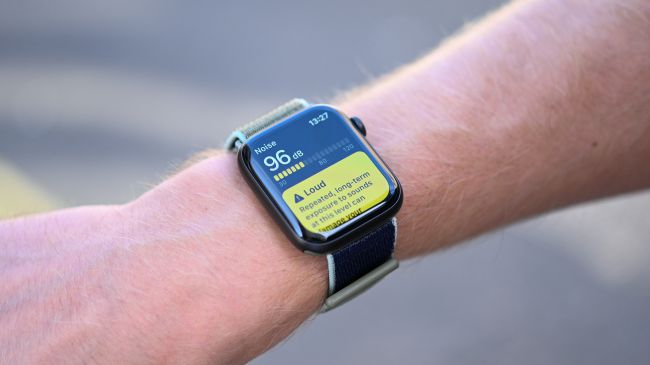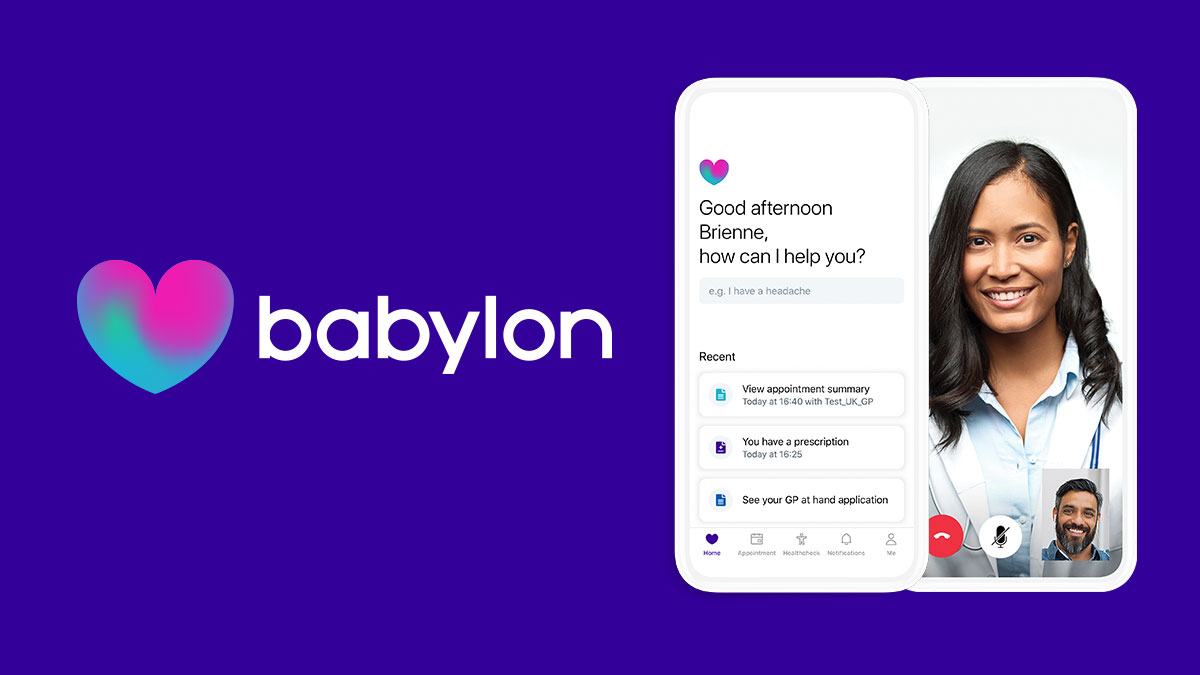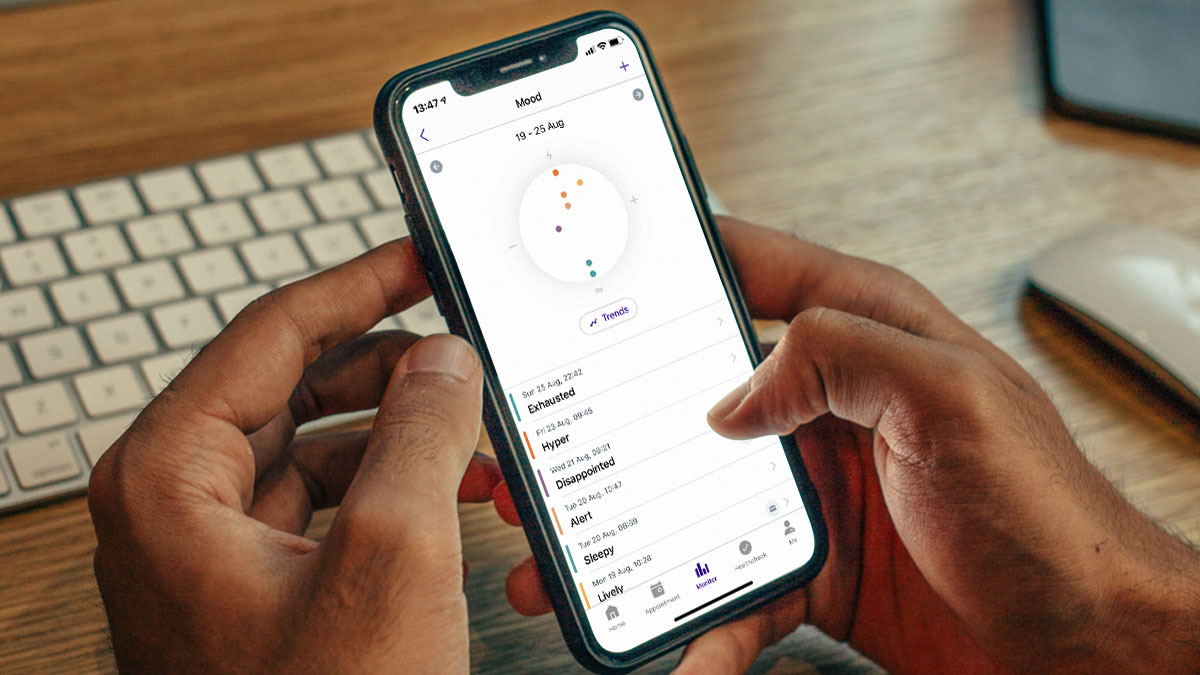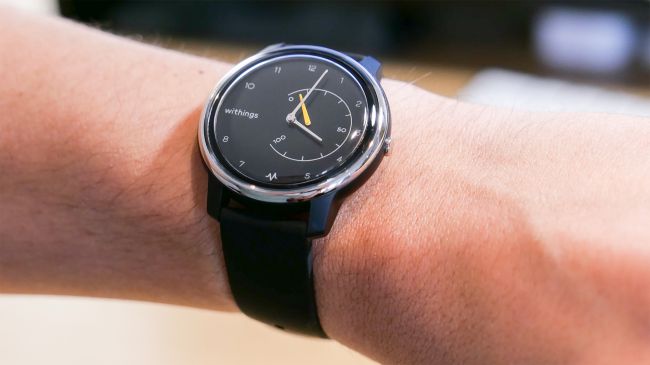Are fitness trackers the future of healthcare?

Imagine your fitness tracker vibrates on your wrist – but it’s not because you’ve reached your 10,000 steps goal for the day or because you’ve received an email. Instead, your tracker is warning you that your blood pressure is high, your doctor has seen the stats in real-time and they want you to de-stress. Or maybe an analysis of your sweat is showing you’re a little too dehydrated. Or maybe the air around you is full of allergens and could set off your asthma.
The sensors within our fitness trackers have improved greatly in recent years. We now have more accurate heart rate monitors, accelerometers to detect the smallest changes in movement and positioning, and even ECG sensors in devices like the Apple Watch, Samsung Galaxy Watch Active 2 and Amazfit Verge 2 to flag up issues with our hearts.
But many experts believe this is just the beginning and soon our fitness trackers will be packed with an even wider range of sensors to collect data that could, potentially, save our lives, diagnose illnesses and keep our doctors constantly updated.
Advancing sensors
For fitness trackers to become valuable health tools and diagnostic devices in the future, they’ll need even more sensors. Right now, there are many different sensor technologies in development that could tell you more about your body – and the atmosphere around you – in the not-so-distant future.
For example, air sensing and analyzing tech is receiving a lot of funding and attention at the moment – especially as areas around the world become more smoggy and polluted. Over the past few years, we’ve seen companies like Plume Labs and Cair develop products that can alert you to changes in the air around you. This is appealing for those with respiratory issues, allergies and anyone with general pollution concerns too.
These sensors currently exist within standalone devices, but could one day be translated into much smaller wearable trackers.
But it won’t just be about sensing the air in your home or direct vicinity. To make data about the air more meaningful, this information could become cloud-based. That way upcoming hazards, including pollen or smog, could be crowd-sourced and then relied upon for real-time updates. This is the thinking behind the AIR app from Plume Labs, which shares data with people in different locations.
Sign up for breaking news, reviews, opinion, top tech deals, and more.

Another sensor technology that might be fitted into wearables in the future is the kind that can monitor and analyze your sweat. Engineers at the University of California, Berkeley have been working on a sensor that can measure electrolytes and metabolites in your sweat. It takes information about skin temperature and can then alert you to lots of problems, including fatigue and high temperature, which might be the first sign of dehydration or illness.
As well as sweat, your breath could also provide useful feedback. Devices that contain sensors to analyse the composition of your breath are already available to some athletes and health professionals and, one day, could make their way into our fitness trackers.
For example, Cosmed’s K5 measures oxygen consumption, heart rate and energy expenditure from your breath. These kinds of devices are bulky, so it’ll be a challenge reducing them into a wearable. But with so much valuable data in your breath, a Fitbit that doubles as a personal breathalyzer might not be too far away.
Of course, this is just the beginning. New ways to track blood glucose levels, interpret your mood, guess at your stress and measure your blood pressure are also being developed, and even built-in to some consumer-facing wearable devices already.

Joining the dots
The big question is: what do we do with all of this new data?
“We’re at a point where the suite of sensors is pretty good. And so the focus now is to make the information more valuable,” Mike Feibus president and principal analyst at FeibusTech, tells us. “Consumers of tired of alerts like ‘you walked 1,243 more steps than yesterday,’ or ‘you spent 23% of the night in REM sleep.’ They want to know what that means. And what they can do to make that better. That’s challenging.”
The technology is only half of the equation. There are many who believe that for these wearables to truly change the way we treat and diagnose health issues in the future, we need to improve the way data is interpreted and then shared with healthcare professionals as well.
For example, an advanced tracker that can detect heart problems may sound like a life-saving wearable, but if the data isn’t easy to understand, sent to your doctor or properly taken into account for future treatment, it won’t be as helpful as it could be. In fact, it could just prove to be more confusing.
Of course there’s responsibility here on wearable tech manufacturers to work to better interpret our data for us and make it accessible. But there’s only so much individuals can do with potentially complicated medical information. This is where doctors come in and why it’s imperative they understand the potential of wearable technology – and how to use, access and interpret the data it collects.
“Fitness trackers are great. And, if used well, can give clinicians useful insights into a patient’s physical wellbeing,” Farhan Amin, GP and founder of Concept Health Technologies tells TechRadar. “They can also be incorporated in hospitals to measure the activity and physical progress of a patient. This can help with the discharge planning enabling right support for the patient is in place before discharge.”
But although fitness trackers are encouraged by some doctors, they’re not commonplace – at least not yet.
“The challenge is how to incorporate fitness tracker within the existing healthcare setting,” Amin says. He believes the answer is a more joined-up approach. “To move forward, healthcare providers and fitness tracker companies need to work together closely to ensure the patient gets value from being tracked.”
Although implementing new ways of tracking and diagnosing issues might seem like a costly undertaking, it certainly makes sense for both patients and medical professionals. “Here’s an opportunity to make the devices our doctors’ eyes and ears for the 99.99% of the time we’re not in their offices,” Feibus says.

One company already working to make sense of the data collected from fitness trackers, and shake up how we view and access healthcare, is Babylon Health.
“We already help users better understand the information that’s collected using their fitness and wellness devices with our Monitor product,” Keith Grimes, clinical artificial intelligence and innovation director at Babylon Health tells us. “Users can review their activity, weight, energy expenditure and distance travelled through integrations with popular wearables like Fitbit and Garmin.”
But Grimes explains this is just the beginning. Future plans will look to track mood and other measurements, integrating them into a comprehensive health record. “In this way, fitness tracker data will be able to help people manage their chronic conditions like diabetes and high blood pressure, better understand their risk of diseases and take action to prevent them,” Grimes explains. “This will even support doctors and our AI to make diagnoses, advice treatments, and better manage their health.”
For this to work, both Grimes and Amin point to the need for accurate data that’s collected with a patient’s consent. “If we are going to help people manage their health using fitness trackers, we have to first make sure that it is safe to do so,” Grimes says. People will, increasingly, need to know what they’re consenting to, who will see their data and what it’ll be used for.

Looking to the future
Amin believes that different kinds of wearable and consumer-focused sensor technologies will become a standard way of collecting more data about patients in the future.
“I think the wrist will continue to remain the mainstay of the fitness tracker for now,” he tells us. “It comes natural as people are used to wearing wrist watches. There is a lot of research going on in smart patches, smart ink, smart clothing, all of which is really exciting but none of them are consumer ready yet.”
But further into the future our wrists will just be the beginning. We can expect more of a holistic approach to health with the tech, and AI assistants, already in our homes.

“Eventually fitness trackers or the current generation of fitness trackers will become obsolete and replaced with even more intuitive and passive form of data capture,” Amin predicts. “Smart home, smart cars, smart offices will talk to each other and may be able to capture physiological and biochemical data in a non-invasive way.”
More sensors are being added to fitness trackers as we speak, and plenty more are in development. The challenge is how we can turn these trackers from cool lifestyle devices into potentially life-saving health tools. To do this we’ll need ways to better interpret our own data, as well as understanding from medical professionals who are as clued up about what the technology is capable of as we are. That way our doctors will be better equipped to look after us and we’ll all be much more informed about our health because we can keep a close eye on it 24/7.
- The best fitness tracker 2019: the top 10 activity bands on the planet

Becca is a contributor to TechRadar, a freelance journalist and author. She’s been writing about consumer tech and popular science for more than ten years, covering all kinds of topics, including why robots have eyes and whether we’ll experience the overview effect one day. She’s particularly interested in VR/AR, wearables, digital health, space tech and chatting to experts and academics about the future. She’s contributed to TechRadar, T3, Wired, New Scientist, The Guardian, Inverse and many more. Her first book, Screen Time, came out in January 2021 with Bonnier Books. She loves science-fiction, brutalist architecture, and spending too much time floating through space in virtual reality.